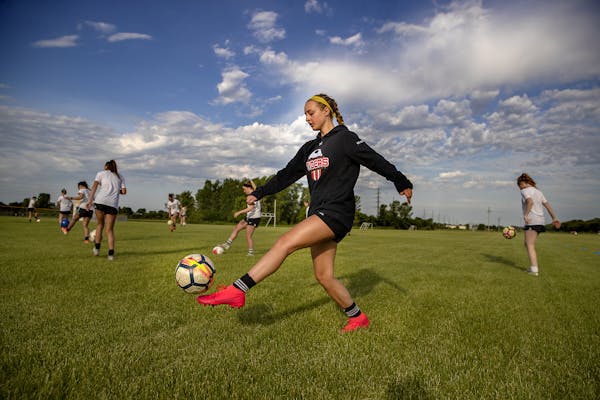The youth hockey coach did everything right. When his kids came to the rink, they avoided gathering in the locker room. Instead they went to their individual spots to get their gear on. Once on the ice, only the minimum number took part at a time. Each brought their own water bottles. Just like the social distancing-minded state guidelines call for to play sports as safely as possible in the age of COVID-19. Until the practice was over."As soon as we're done with our two hours, six of 'em get into an SUV and they drive off,'' said Craig Perry, recounting the experience of a friend. "That's a perfect example of a controlled environment to not controlled.''
As a Minnesota State High School League associate director, Perry told the story to about 345 high school sports leaders and school officials in a Zoom meeting Thursday to emphasize what coaches face on the eve of trying to restart high school sports amid the coronavirus pandemic.
"The best you can do to control the environment is going to be best for participation,'' he said. "Where the exposure risk increases is when students and student athletes step out of the control environment.''
On a beautiful summer morning better spent at the lake, those listening in represented almost 70 percent of the league's 500-school membership. It was one of the largest turnouts for the weekly meetings, which the league has held since the pandemic shutdown winter tournaments in March.
Their challenge comes as summer outdoor youth sports, following state guidelines, have generally resumed without reported major outbreaks of illness.
It also includes an awareness that high school sports are not the only option for top athletes who play club sports to improve their chances of playing in college, or who may see other states as options if, for example, football won't be played.
As the meeting wrapped up, Perry noted a late Zoom chat comment and said the league's return-to-participation task force has "discussed the impact of high school participation vs. club or non-school participation. That has been a very prominent discussion item.''
Earlier in the meeting Erich Martens, the league's executive director, cited school sports' "unique connection to education'' in distinguishing them from local groups that run club programs such as volleyball and basketball leagues.
Such a program "does not need to worry about how their interactions and their behaviors might impact an educational setting,'' Martens said, "where we as a state high school league, and with activities connected to school, have to be really thoughtful about what does that mean.
"If we have an outbreak in our activities, that's going to impact schools and could have some impacts on shutdown.''
The task force has discussed four options for restarting fall sports: A traditional season that starts on time, a delayed start with a 20 to 30% reduction in games, a practice-only season that defers playing games until spring, and a deferred season that would be somehow wedged in without butting up against traditional spring sports.
The group is expected to complete its work Friday and make recommendations for the board's consideration at its meeting on Tuesday.
With fall sports set to begin Aug. 17, uncertainty percolated through the questions posted by school officials. For example, Aug. 7 is the last day coaches can work with their athletes until those fall practices begin. What happens if a season is delayed?
"We are getting right down to some of the smallest details,'' Perry told the group, acknowledging that league rules and bylaws could be affected if fall practice is delayed.
With a nod to the board meeting on Tuesday, he added, "So much could change in the next five days.''






